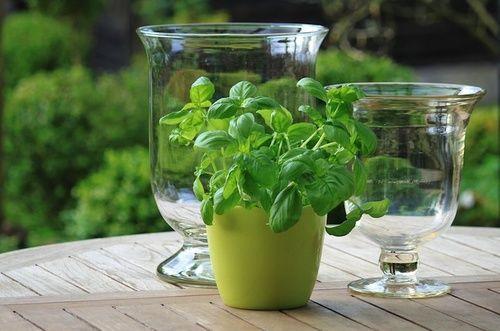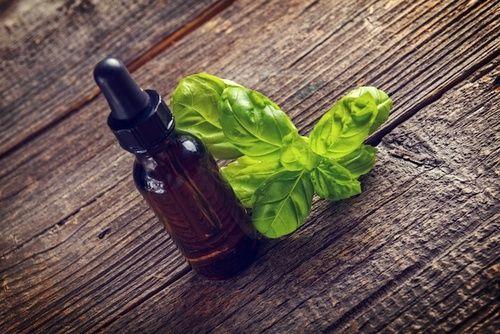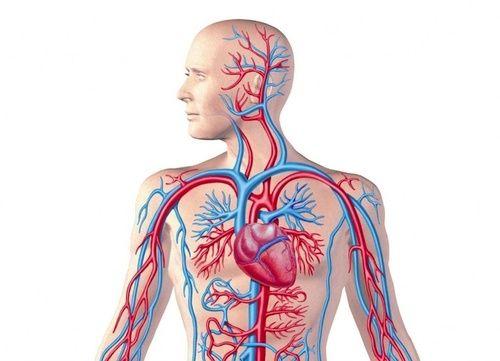Il basil (Ocimum basilicum) is a plant rich in vitamin K. and manganese, with important properties inflammatory e antioxidants. Let's find out better.
> Description of the basil plant
> Calories and nutritional values of basil

Description of the basil plant
Basil is an extremely fragrant herb and fragrant and its delicate leaves, with a distinctly aromatic flavor, are mainly used in Mediterranean and Asian cuisine. The scientific Latin name, Ocimum basilicum, comes from the Greek term "basilikon" which means "royal, majestic plant”, Which reflects a tradition that in ancient times regarded basil as a noble and sacred plant. This reverence is also found in other cultures, for example in India basil was regarded as a symbol of hospitality. Among the ancient Egyptians and Greeks, basil was considered a good omen for the afterlife and it was used for embalming. The Chinese and the Arabs were aware of its medicinal properties, while the Crusaders filled their ships with it to keep away insects and bad smells.
Basil belongs to the peppermint family, and its rounded but slightly pointed leaves vary from deep green to purplish hues. There are in fact about 60 varieties of basil, slightly different from each other in appearance and taste.
The four Mediterranean varieties include:
- the Greek basil, with small leaves and a spicy aftertaste, very suitable for fresh foods;
- the purple basil, with a dark color and a delicate taste;
- common basil, with an intense aroma and large leaves;
- Genoese basil, known throughout the world as the main ingredient of pesto.
Among the Asian varieties we find:
- the lemon basil, with a small leaf and citrus flavor;
- the Thai basil, sweet, intense and with a licorice flavor;
- the sacred basil, spicy and strong and strangely better cooked than raw.
Basil grows all year round, but prefers the summer months. It is easy to grow it indoors, on the balcony or in the garden, in a sunny and sheltered position; the earth should be kept moist although it should not be excessively wet - too much water dilutes the flavor of the leaves - and the inflorescences should be cut to encourage leaf growth.
It is just as easy to buy fresh basil in shops and supermarkets and to keep it longer it is best to wrap it in a damp sheet of kitchen paper, place it in a perforated plastic bag and keep it in the fridge. It can also be frozen, both in leaf and chopped, and added directly to sauces and soups.
Basil is also found dry and can be kept in the dark in a glass container for about six months, however its typical taste is certainly better when eaten fresh. In the end the essential oil of basil it is used to treat countless ailments: from breathing problems, acne, indigestion and flatulence, to name but a few.
You can learn more about all the properties and contraindications of basil essential oil

Properties of basil
Basil has remarkable nutritional and health properties and is rich in countless minerals and nutrients including vitamin K and manganese. It's a great one source of copper and vitamin C, as well as calcium, iron, folic acid and omega 3 fatty acids.
Recent studies have shown that basil's most distinctive health benefits lie in two main areas: the volatile oils and flavonoids. The latter contribute to protect the cell structure and chromosomes from radiation damage and oxidative damage from free radicals. In addition, other laboratory research has highlighted the antibacterial properties of the volatile oils of basil and their effectiveness in reducing the growth of countless bacteria, including Listeria, Staphylococcus aureus, Escherichia coli, and Yersinia enterocolitica.
The essential oil of basil has been found to be effective in inhibiting the growth of bacteria of the Staphylococcus, Enterococcus and Pseudomonas families, which are not only extremely common, but pose serious treatment difficulties as they have developed a high level of resistance to antibiotics. While scientists use this research to develop natural preservatives, we can say it definitely makes sense regularly include basil (and thyme) in our recipes, especially in raw dishes such as salads. Adding these fresh herbs to our vinaigrette will not only make our salads tastier, but also safer to eat.
Also note the anti-inflammatory effects of this so common plant. One of the elements of basil oil (Eugenol) has in fact the ability to inhibit the effect of an enzyme that causes inflammation and has been shown to be effective in relieving the symptoms of individuals suffering from inflammatory problems such as rheumatoid arthritis or inflamed intestines.
Finally, basil is an excellent source of vitamin A, thanks to its high concentration of carotenoids such as beta-carotene. The latter is a powerful antioxidant capable of protecting epithelial cells from free radical damage and helping to prevent the oxidizing action on cholesterol. Cholesterol, in fact, forms plaques in blood vessels only once oxidized and can contribute to increasing the risk of cardiovascular disease and atherosclerosis. So to increase the flavor and the cardiovascular benefits of your sauce just add a generous portion of basil.
But the benefits of this little herb don't end there: the damage from free radicals also contributes to other diseases, such as asthma, osteoarthritis and rheumatoid arthritis, and the beta-carotene in basil can help slow the progression of these conditions while protecting the cells from further damage.
The basil is an excellent source of magnesium, an essential mineral with great relaxing properties for both muscles and blood vessels, able to support circulation and decrease the risk of arrhythmias.
Calories and nutritional values of basil
100 g of basil contain 23 kcal, e:
- 3,15 g protein
- G carbohydrates 2,65
- Sugars 0,3 g
- 0,64 g fat
- Dietary fiber 1,6 g
- Sodium 4 mg
Also discover all the ailments and remedies for the cardiovascular system

Basil in the kitchen
There are many ways to enjoy basil and just use our imagination, but certainly the best way is to consume it fresh and, since its oils are very volatile, it's fine add it at the end of cooking to retain the maximum of its essence and flavor.
From the famous pesto, to the leaves added to tomato and mozzarella, or on pizza, there are many traditional uses of basil in our kitchen, but here is a perhaps unusual but extremely tasty recipe for a frappé.
A recipe with basil
Basil and banana smoothie.
Ingredients
- 2 banana
- 10 basil leaves
- 1 honey spoon
- 1/4 cup of water
Method
Combine all the ingredients in a blender and enjoy immediately.
Curiosity
Basil essential oils have several medicinal uses and can be used to calm coughs, but also to relieve anxiety, stress and insomnia. It also owns digestive properties, therefore suitable for nausea and indigestion.
If you have been stung by an insect, mosquito or wasp, a drop of essential oil on the sting will help neutralize the poison.
Cold or lukewarm brew serves as mouthwash for throat and mouth.
By putting a drop of basil essential oil on leeks or warts, 2 or 3 times a day for shorter or longer periods, they should disappear.


























